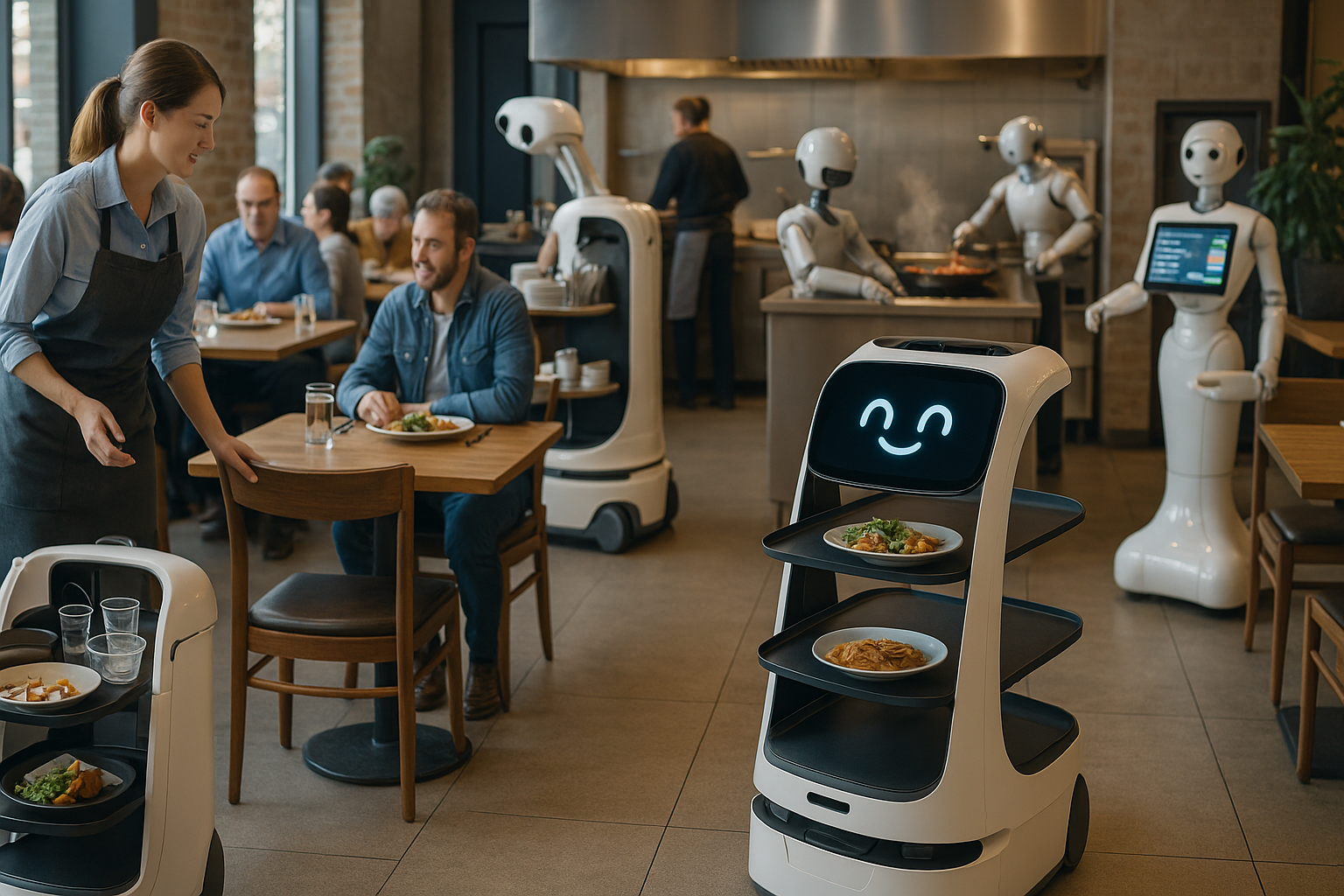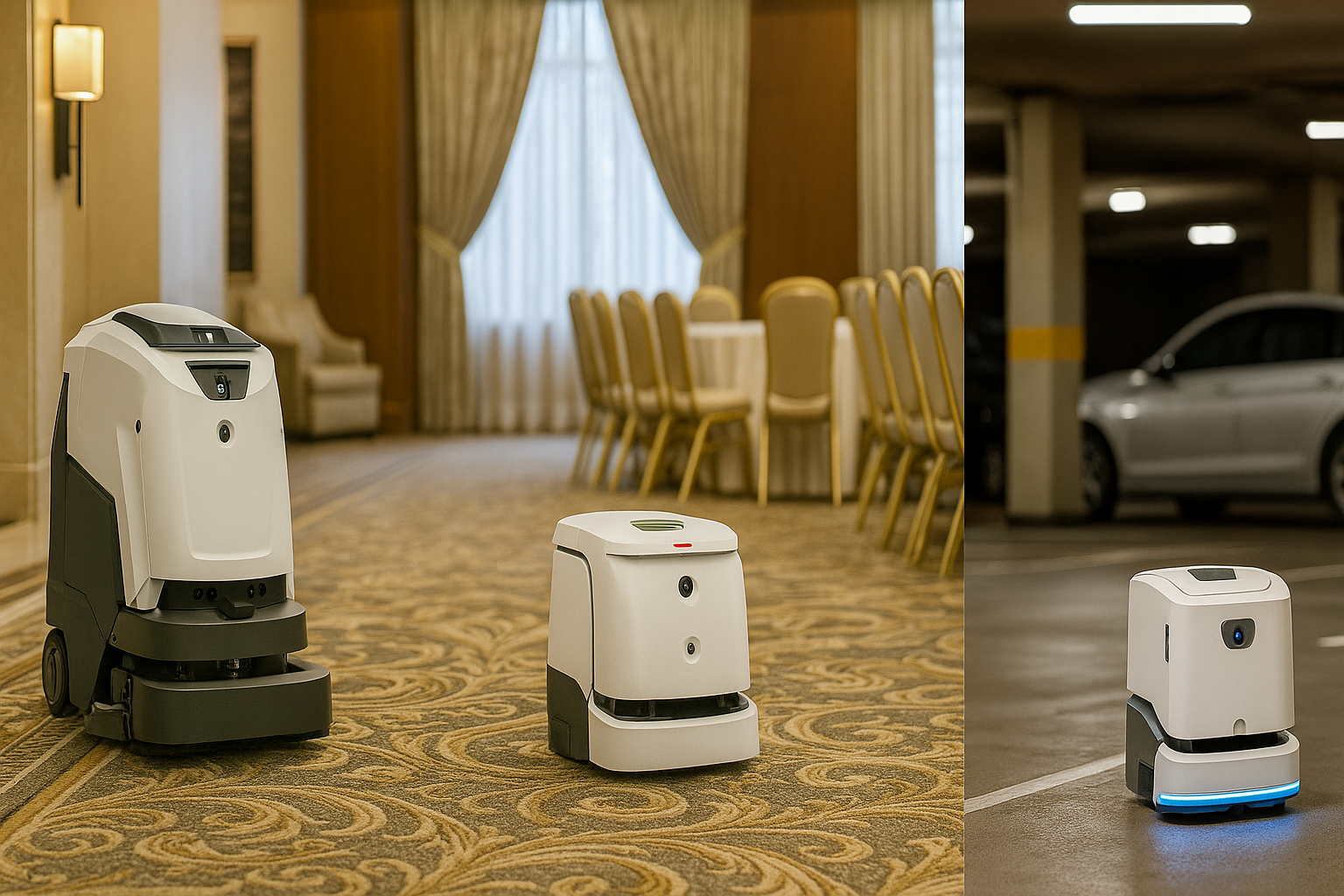What Are the Most Affordable Restaurant Automation Solutions for Small Businesses?
Jun 28, 2025
If you’re running a small restaurant, you’re already juggling tight margins, high turnover, and increasing labor costs. Add in staffing shortages, rising food prices, and changing guest expectations—and you’ve got the perfect storm.
So the question is no longer “should I automate?” but “how fast can I start?”
In Our Robotics Future, I talk about how automation isn’t about replacing jobs—it’s about making your current team more productive, less stressed, and more consistent. And nowhere is that truer than in small restaurants.
Let’s break down the most affordable, impactful automation tools available for restaurant owners today—from the front-of-house to the kitchen.
1. Delivery Robots: The New Food Runners
If you operate a full-service restaurant, your servers are constantly being pulled out of the dining room to grab food, drinks, or extra sides. Every trip to the kitchen means less time with guests—and less opportunity to upsell or deliver great service.
Enter the delivery robot.
What It Does:
-
Carries food from the kitchen to the table
-
Handles multiple tables at once
-
Frees up human servers to stay in the dining room
Why It Matters:
These robots are affordable, reliable, and loved by servers. Instead of replacing your staff, they act as assistants—giving your servers time to engage guests, turn tables faster, and boost tips.
In most restaurants, just one food-runner robot can reduce front-of-house labor needs by 1–2 people per shift, while improving service speed.
2. Bussing Robots: Cleaning Support That Doesn’t Stop
After the meal comes the mess. And bussing tables quickly is a huge bottleneck for most small restaurants—especially when short-staffed.
Bussing robots can be programmed to:
-
Visit tables with empty trays or dish bins
-
Transport dirty dishes to the back of house
-
Clear surfaces and even assist with minor trash collection
This allows your staff to focus on resetting tables and seating new guests—not running back and forth with bus tubs.
It’s one of the lowest-cost ways to improve turnover speed and reduce stress during rush hours.
3. Cooking Robots: Precision and Speed in the Kitchen
In the back of house, cooking robots are becoming more common—and more affordable.
From burger-flipping arms to robotic fry stations and wok bots, these systems:
-
Cook food consistently and to spec
-
Handle repetitive or dangerous tasks
-
Reduce kitchen labor needs by 1–2 line cooks
As I say in Our Robotics Future, the magic of kitchen automation is in its predictability. Robots don’t overcook or under-season. They don’t get distracted or burned out. They execute exactly what you tell them, every single time.
In small restaurants, these tools:
-
Maintain food quality during high turnover
-
Reduce training time for new cooks
-
Cut labor costs without sacrificing output
4. Host Robots: Welcoming Guests and Managing Queues
In fast-casual or busy full-service restaurants, greeting guests quickly and getting them seated smoothly is key to keeping flow and satisfaction high.
Host robots, like Pepper, can:
-
Greet and engage waiting guests
-
Display menus and promotions
-
Take guest names and manage a digital waitlist
-
Communicate with your team when it’s time to seat
They don’t replace your host—they support them, handling repetitive greetings and check-ins so the human host can focus on problem-solving, guest service, or training new hires.
Why These Solutions Are Affordable Now
Ten years ago, robotic restaurant tools were futuristic and unaffordable. Today?
-
Robots can be leased for a few hundred dollars a month
-
You can start with one robot and expand
-
Support and onboarding are faster and easier than ever
And with nationwide service, platform-agnostic providers like RobotLAB can help you pick the robot that fits your restaurant—not just sell you whatever's on the shelf.
ROI Example: Delivery Robot vs. Runner
Let’s run the numbers on a single delivery robot.
-
Average lease: $700/month
-
Labor cost saved (1 food runner @ $15/hr x 8 hrs/day x 30 days): $3,600/month
-
Monthly savings: ~$2,900
-
ROI = [(3600 - 700)/700] x 100 = 414%
That’s not a luxury item. That’s a workforce multiplier that pays for itself in less than a week.
Final Thoughts: Small Restaurants, Big Wins
Small restaurants have the most to gain from automation. A few hundred dollars a month can:
-
Eliminate bottlenecks
-
Improve guest satisfaction
-
Reduce labor costs
-
Retain your best employees by making their jobs easier
Learn from Taco Borga, Owner and Head Chef How he emplys robots in his restaurants
And you don’t need to overhaul your business to get started. Just choose one robot that addresses your biggest pain point, and grow from there.
Ready to Find the Right Robot for Your Restaurant?
At RobotLAB, we help small businesses match the right automation tools to their exact needs. No fluff. No guesswork. Just affordable, practical solutions that make your operation smoother and more profitable.
📞 Scroll down to speak with a specialist in one of our many locations, or Contact RobotLAB global specialists for a custom ROI analysis and explore how delivery robots can drive operational excellence and brand differentiation for your property.









 Too much to read? Don't have time?
Too much to read? Don't have time? 

.webp?width=124&height=124&name=image%20(1).webp)
.webp?width=169&height=87&name=image%20(2).webp)













